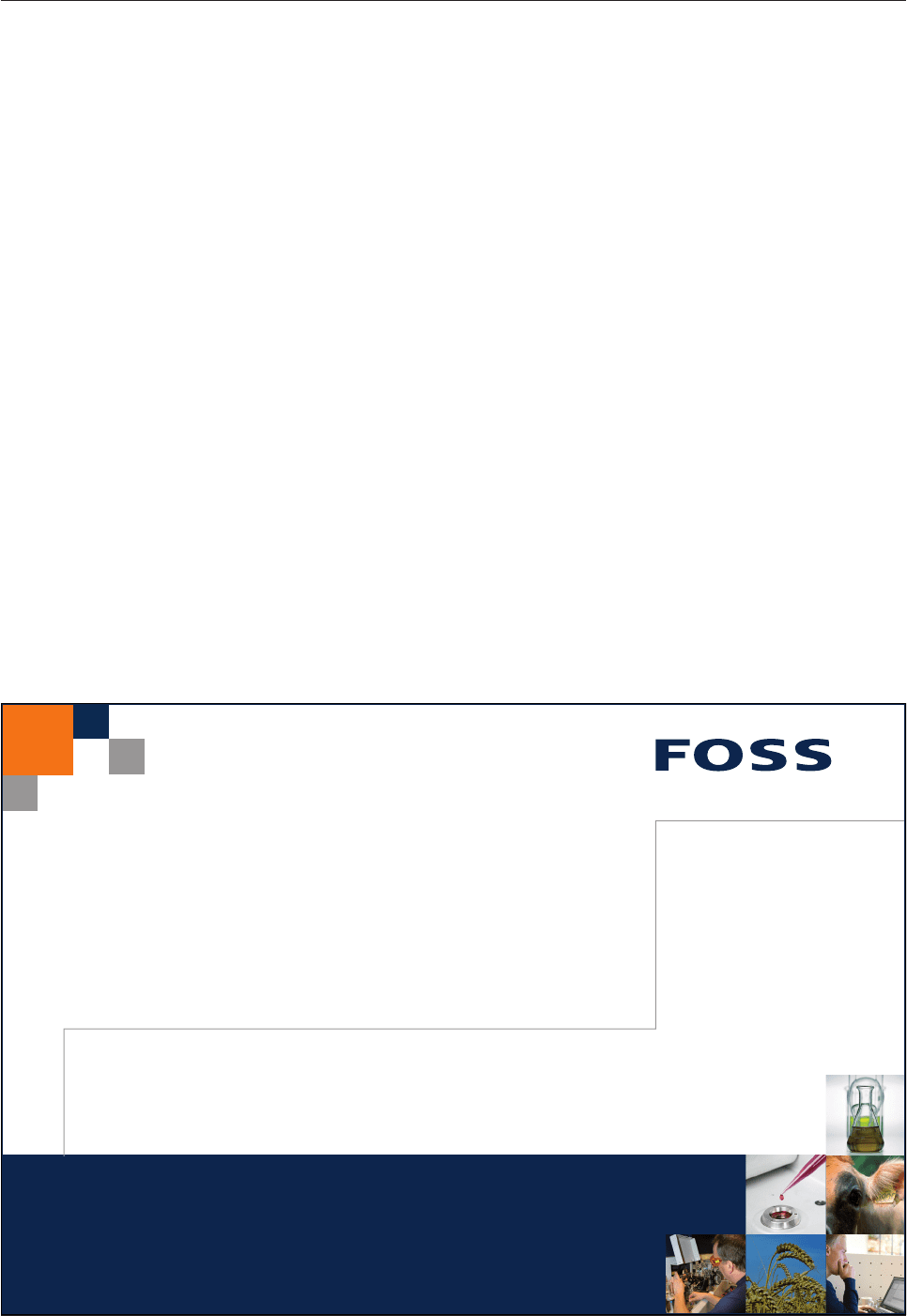Hugh Darwen. An introduction to relational database theory
Подождите немного. Документ загружается.


Download free books at BookBooN.com
An Introduction to Relational Database Theory
111
Relational Algebra – The Foundation
x Unlike JOIN, UNION does not have a single identity value. The normal set-theory union operator
does have an identity value, namely, the empty set. But relations have headings and there is no
single heading that can be the heading of a relation that, when unioned with any relation r, yields r.
However, we can note that if re is the empty relation of the same type as r, then r UNION re = r.
For that reason, Tutorial D, for what it’s worth, does allow you the take the union of no relations
at all, so long as you specify the heading of the desired result. For example:
UNION { x CHAR, y INTEGER, z SID } { }
If the key word UNION is replaced by RELATION, that would yield the same result of course.
Now you may well ask, what is the point of being able to take the union of no relations? Well, experience
shows that it is a mistake in a computer language to legislate against support for empty operands when the
operation in question has a mathematically respectable definition. Sometimes scripts in a desired language
are generated for us by special-purpose software; legislating against something that is definable but
apparently pointless sometimes turns out to be inconvenient for the developers of the generating software.
I know of several cases in SQL, for example, where that kind of concern has arisen. In particular, standard
SQL has no counterparts of TABLE_DEE and TABLE_DUM, nor does it allow one to express unions and
joins with no operands.
There remains one logical operator that I have not given you a relational counterpart of yet: negation. We
shall see that, as with OR, we have to restrict ourselves to certain special cases involving negation, and
these cases are addressed by a dyadic operator that goes by the strange name semidifference.
4.10 Semidifference and NOT
Consider the negation of the predicate for IS_CALLED: “Student StudentId is NOT called Name.” We run
into the same problem as that one we encountered with disjunction, for its extension includes
instantiations such as “Student S1 is not called Jane”, “Student S97431 is not called Anne”, “Student S1 is
not called Xdfrtghyuz”, and so on, ad infinitum (“almost”!). The term unsafe is sometimes used in
connection with predicates such as these, where the corresponding relation is likely to be of such
inordinately high cardinality as to be not computable in practice. It is no coincidence that both negation
and disjunction are unsafe in general: recall that pq is equivalent to ¬(¬p¬q).
So, when exactly can we “safely” use negation? Here is one example:
StudentId is called Devinder AND StudentId is NOT enrolled on C1.
Here we use AND to connect two predicates that have the same parameterthe same restriction as the one
we needed for disjunction. In this case, though, the second is negated. In Tutorial D we can obtain the
relation representing this predicate by using an operator named MINUS, as shown in Example 4.10.
MINUS is a relational counterpart of set difference and is subject to exactly the same restriction as UNION
concerning the types of its operands.

Download free books at BookBooN.com
An Introduction to Relational Database Theory
112
Relational Algebra – The Foundation
Example 4.10: A legal invocation of MINUS
( IS_CALLED WHERE Name = NAME ('Devinder') ) { StudentId }
MINUS
( IS_ENROLLED_ON WHERE CourseId = CID ('C1') ) { StudentId }
In general r1 MINUS r2 returns the relation whose heading is that of both operands and whose body
consists of those tuples of r1 that do not appear in the body of r2. MINUS was the operator proposed by
Codd for dealing with negation, but it turned out that we can do better than that. In fact, we don’t actually
need that restriction on the operand types, if we base the operator on the concept of matching tuples, as we
did with JOIN, instead of basing it on identical tuples in particular.
Consider the predicate
Student StudentId is called Name and StudentId is not enrolled on any course.
The first conjunct is the predicate for IS_CALLED. The second is clearly derivable from the predicate for
IS_ENROLLED_ON but we should write it a little more formally to see how it is derived:
There does not exist a course CourseId such that student StudentId is enrolled on CourseId.
Are you considering a European business degree?
Copenhagen Business School is one of the largest business schools in
Northern Europe with more than 15,000 students from Europe, North
America, Australia and Asia.
Are you curious to know how a modern European business school
competes with a diverse, innovative and international study
environment?
Please visit Copenhagen Business School at www.cbs.dk
DIVERSE - INNOVATIVE - INTERNATIONAL
Diversity creating knowledge
Please click the advert

Download free books at BookBooN.com
An Introduction to Relational Database Theory
113
Relational Algebra – The Foundation
We can discover whether a given StudentId value satisfies this monadic predicate by looking to see if
there is a tuple with that StudentId value in the current value of IS_ENROLLED_ON. That means that for
each tuple in the current value of IS_CALLED we can test to see if the student referred to is enrolled on
anything by looking to see if that tuple has a matching tuple in IS_ENROLLED_ON. Instead of taking the
difference between certain projections to satisfy the requirement of MINUS for operands of the same type,
we can take the semidifference between IS_CALLED and IS_ENROLLED_ON (in that order). Tutorial D
uses the more intuitive name NOT MATCHING for this operator, as illustrated in Example 4.11.
Example 4.11: Semidifference (students not on any courses)
IS_CALLED NOT MATCHING IS_ENROLLED_ON
Figure 4.12 shows the result of Example 4.11.
StudentId Name
S5 Boris
Figure 4.12: Result of Example 4.11
Definition of NOT MATCHING
Let s = r1 NOT MATCHING r2
where r1 and r2 are relations such that r1 JOIN r2 is defined.
Then:
x The heading of s is the heading of r1.
x The body of s consists of each tuple of r1 that has no matching tuple in r2.
Points to note:
x The body of the result is, as with restriction, a subset of that of the first operand. It follows that if
r1 is empty, then so is s.
x If r1 and r2 have no common attributes, then s is equal to r1 in the case where r2 is empty and is
otherwise empty (recall that tuples having no common attributes are considered to be matching
tuples).
x Where r1 MINUS r2 is defined, it is equivalent to r1 NOT MATCHING r2. So we can clearly
dispense with MINUS without sacrificing completeness. As an exercise, you might like to check
whether an algebra that, like Codd’s, includes MINUS instead of NOT MATCHING also does not
thereby sacrifice completeness.

Download free books at BookBooN.com
An Introduction to Relational Database Theory
114
Relational Algebra – The Foundation
It’s a natural question to ask whether MATCHING is also supported. In fact it is, but because its inclusion
in the language is not essential for relational completeness I defer discussion of it to the next chapter. In a
nutshell, r1 MATCHING r2 yields the relation whose body consists of just those tuples of r1 that have at
least one matching tuple in r2.
4.11 Concluding Remarks
I have described the following relational operators:
x JOIN
x RENAME
x projection
x restriction (WHERE)
x EXTEND
x UNION
x semidifference (NOT MATCHING)
I have claimed that these meet the criterion for completeness of a relational algebra for computational
purposes. I justify this claim by showing that they include relational counterparts of logical AND, OR, NOT,
and existential quantification, with agreed limitations on OR and NOT in the interests of “safety”. I have
left slightly open the question of whether the chosen set is necessary for completeness, as well as being
sufficient for it. Let me address that point now.
Why do we have three different counterparts of AND? Well, it is true that if our purpose were
mathematical only we could use JOIN for restrictions and extensions too, but that would entail the use of
operand relations representing operators like “<” and “+”, and these tend to be as inordinately large as
those that prohibit us from having unrestricted relational counterparts for disjunction and negation. For
consider, the relation for “<” of integers includes a tuple for every pair <a,b> of integers such that a<b is
true, and the relation for plus includes a tuple for every triple <a,b,c> such that a+b=c is true. Restriction
and extension allow us to use invocations of operators in open expressions.
That said, there is actually one operator in my list that could be dispensed with without sacrificing
completenessone whose definition I could have given in terms of others in my list. I leave it as an
exercise for the reader to discover which one that is and write a definition for it using the other operators.
In any case, the inclusion of this superfluous operatorand we do have good reason to include
itreminds us all that we don’t always want an algebra to be pared to the theoretical minimum in terms of
its number of operators. In propositional logic, for example, the psychological reasons for including both
AND and OR, even though either can be defined in terms of the other along with NOT, are, most would
agree, overwhelming.
I have laid the foundation. In the next chapter I build on that foundation.

Download free books at BookBooN.com
An Introduction to Relational Database Theory
115
Relational Algebra – The Foundation
EXERCISES
1. Recall that r1 TIMES r2 requires r1 and r2 to have no common attributes, in which case it is
equivalent to r1 JOIN r2. Why would it be a bad idea to require TIMES to be used in place of
JOIN in such cases?
2. Given the following relvars:
VAR Cust BASE RELATION {C# CHAR, Discount RATIONAL} KEY {C#};
VAR Order BASE RELATION {O# CHAR, C# CHAR, Date DATE} KEY {O#};
VAR OrderItem BASE RELATION {O# CHAR, P# CHAR, Qty INTEGER }
KEY {o#, P#};
VAR Product BASE RELATION {P# CHAR, Unit_price RATIONAL}
KEY {P#};
The price of an order item can be calculated by the formula:
Qty*Unit_price*(1-(Discount/100))
Write down a relation expression to yield a relation with attributes O#, P#, and PRICE, giving
the price of each order item.
3. Given:
VAR Exam_Marks BASE RELATION { StudentId SID,
CourseId CID,
Mark INTEGER}
KEY { StudentId, CourseId };
Write down a relational expression to give, for each pair of students sitting the same exam, the
absolute value of the difference between their marks. Assume you can write ABS(x) to obtain the
absolute value of x.
4. State the value of
(a) r NOT MATCHING TABLE_DEE
(b) r NOT MATCHING TABLE_DUM
(c) r NOT MATCHING r
(d) (r NOT MATCHING r ) NOT MATCHING r
(e) r NOT MATCHING (r NOT MATCHING r)
Is
NOT MATCHING associative? Is it commutative?
5. (Repeated from the body of the chapter) Which operator, in the list given in Section 4.11,
Concluding Remarks, can be dispensed with without sacrificing relational completeness? How
can it be defined in terms of the other operators?

Download free books at BookBooN.com
An Introduction to Relational Database Theory
116
Relational Algebra – The Foundation
6. (Repeated from the body of the chapter) Investigate the completeness of an algebra that includes
MINUS in place of NOT MATCHING by attempting to define NOT MATCHING in terms of
MINUS and the other operators.
7. The chapter briefly mentions the operator MATCHING but defers its detailed description to
Chapter 5. Before you read that chapter, define r1 MATCHING r2 in terms of the operators
described in Chapter 4.
At NNE Pharmaplan we need ambitious people to help us achieve
the challenging goals which have been laid down for the company.
Kim Visby is an example of one of our many ambitious co-workers.
Besides being a manager in the Manufacturing IT department, Kim
performs triathlon at a professional level.
‘NNE Pharmaplan offers me freedom with responsibility as well as the
opportunity to plan my own time. This enables me to perform triath-
lon at a competitive level, something I would not have the possibility
of doing otherwise.’
‘By balancing my work and personal life, I obtain the energy to
perform my best, both at work and in triathlon.’
If you are ambitious and want to join our world of opportunities,
go to nnepharmaplan.com
NNE Pharmaplan is the world’s leading engineering and consultancy
company focused exclusively on the pharma and biotech industries.
NNE Pharmaplan is a company in the Novo Group.
wanted: ambitious people
Please click the advert

Download free books at BookBooN.com
An Introduction to Relational Database Theory
117
Relational Algebra – The Foundation
Working with a Database in Rel
1. Start up Rel.
2. Figure 4.13 shows the supplier-and-parts database from Chris Date's Introduction to Database
Systems (8th edition), as shown on the inside back cover of that book (except that the attribute
names there are in upper case).
ŕőőőőőőőőőőőőőőőőőőőőőőőőőőőőőőőőőőőőőőőőőőőőőőőőőőőőőőőőőőőőőőőőőŘ
Œ ňņņņņŎņņņņņņņŎņņņņņņņņŎņņņņņņņņʼn ňņņņņŎņņņņŎņņņņņʼn Œ
Œ S Ň S# Ň Sname Ň Status Ň City Ň SP Ň S# Ň P# Ň Qty Ň Œ
Œ ŌőőőőŐņņņņņņņŐņņņņņņņņŐņņņņņņņņō ŌőőőőŐőőőőŐņņņņņō Œ
Œ Ň S1 Ň Smith Ň 20 Ň London Ň Ň S1 Ň P1 Ň 300 Ň Œ
Œ Ň S2
Ň Jones Ň 10 Ň Paris Ň Ň S1 Ň P2 Ň 200 Ň Œ
Œ Ň S3 Ň Blake Ň 30 Ň Paris Ň Ň S1 Ň P3 Ň 400 Ň Œ
Œ Ň S4 Ň Clark Ň 20 Ň London Ň Ň S1 Ň P4 Ň 200 Ň Œ
Œ Ň S5 Ň Adams Ň 30 Ň Athens Ň Ň S1 Ň P5 Ň 100 Ň Œ
Œ Ŋņņņņŏņņņņņņņŏņņņņņņņņŏņņņņņņņņŋ Ň S1 Ň P6 Ň 100 Ň Œ
Œ Ň S2 Ň P1 Ň 300 Ň Œ
Œ ňņņņņŎņņņņņņņŎņņņņņņņņŎņņņņņņņņŎņņņņņņņņʼn Ň S2 Ň P2 Ň 400 Ň Œ
Œ P Ň
P# Ň Pname Ň Color Ň Weight Ň City Ň Ň S3 Ň P2 Ň 200 Ň Œ
Œ ŌőőőőŐņņņņņņņŐņņņņņņņņŐņņņņņņņņŐņņņņņņņņō Ň S4 Ň P2 Ň 200 Ň Œ
Œ Ň P1 Ň Nut Ň Red Ň 12.0 Ň London Ň Ň S4 Ň P4 Ň 300 Ň Œ
Œ Ň P2
Ň Bolt Ň Green Ň 17.0 Ň Paris Ň Ň S4 Ň P5 Ň 400 Ň Œ
Œ Ň P3 Ň Screw Ň Blue Ň 17.0 Ň Oslo Ň Ŋņņņņŏņņņņŏņņņņņŋ Œ
Œ Ň P4 Ň Screw Ň Red Ň 14.0 Ň London Ň Œ
Œ Ň P5 Ň Cam Ň
Blue Ň 12.0 Ň Paris Ň Œ
Œ Ň P6 Ň Cog Ň Red Ň 19.0 Ň London Ň Œ
Œ Ŋņņņņŏņņņņņņņŏņņņņņņņņŏņņņņņņņņŏņņņņņņņņŋ Œ
śőőőőőőőőőőőőőőőőőőőőőőőőőőőőőőőőőőőőőőőőőőőőőőőőőőőőőőőőőőőőőőőőőŞ
Figure 4.13: The suppliers-and-parts database
Execute a Tutorial D VAR statement for each of S, P and SP. Use INTEGER as the declared type for
STATUS and QTY, RATIONAL for WEIGHT, and CHAR for all the other attributes. Feel free to use
lower case or mixed case to suit your own taste for attribute and relvar names, but do not otherwise
change any of the given names.
Tutorial D requires at least one key constraint to be specified for each relvar. One key for each for S, P
and SP is shown by underlining the relevant attribute names in the table. No other key constraints
are needed.
“Populate” (as they say) each relvar with the values shown in Date's tables. There are several ways of
achieving this. Choose whichever you prefer from the following:
a. Include an INIT ( ... ) specification in the VAR statement, after the heading and
before the KEY specification. Inside the parens, write a RELATION { ... }
expression, using a TUPLE expression for each required tuple, as in the enrolment literal
used in the Rel exercises for Chapter 2.

Download free books at BookBooN.com
An Introduction to Relational Database Theory
118
Relational Algebra – The Foundation
b. Execute the VAR statement without an INIT ( ... ) specification. The implied initial
value is the empty relation of the appropriate type. You can see this by asking Rel for the
current value of the relvar. For example, to get the current value of S, just type S into the
lower pane and click Run (F5).
Now use an assignment statement of the form
varname := relation-expression
to populate the relvar. Check that Rel has indeed assigned the correct value to it.
c. Use Rel INSERT statements to populate the relvar piecemeal, perhaps one tuple at a time.
Having typed in the first INSERT statement. Here is the general form of an INSERT
statement to insert a single tuple:
INSERT varname RELATION { TUPLE { ... } } ;
Note that the source operand is still a relation, not just a tuple, hence the need to enclose
the TUPLE expression inside RELATION { }.
3. Informally, we refer to S as suppliers, P as parts and SP as shipments. Predicates for these
relvars are:
S: Supplier S# is named Sname, has status Status and is located in city City.
P: Part P# is named Pname, is coloured Color, weighs Weight and is located in city City.
SP: Supplier S# ships part P# in quantities of Qty.
What, then, is the predicate for the expression S JOIN SP JOIN P? What do you expect to be
the result of that expression? What is its degree? Does Rel give the result you expected? Explain
what you see.
4. Attempt to insert a tuple into SP
with supplier number S1, part number P1 and quantity 100.
Explain the result of your attempt.
5. Get Rel to evaluate each of the following expressions. For each one, write down the corresponding
predicate and also give an informal interpretation of the query in the style of those given in
Exercise 6 below.
a. SP WHERE P# = 'P2'
b. S { ALL BUT Status }
c. SP { S#, Qty }
d. P NOT MATCHING ( SP WHERE S# = 'S2' )
e. S MATCHING ( SP WHERE P# = 'P2' )
f. S { City } UNION P { City }
g. S { City } MINUS P { City }
h. ( ( S RENAME ( City AS SC ) ) { SC } ) JOIN
( ( P RENAME ( City AS PC ) ) { PC } )

Download free books at BookBooN.com
An Introduction to Relational Database Theory
119
Relational Algebra – The Foundation
6. Write Tutorial D expressions for the following queries and get Rel to evaluate them:
a. Get all shipments.
b. Get supplier numbers for suppliers who supply part P1.
c. Get suppliers with status in the range 15 to 25 inclusive.
d. Get part numbers for parts supplied by a supplier in London.
e. Get part numbers for parts not supplied by any supplier in London.
f. Get city names for cities in which at least two suppliers are located.
g. Get all pairs of part numbers such that some supplier supplies both of the indicated parts.
h. Get supplier numbers for suppliers with a status lower than that of supplier S1.
i. Get supplier-number/part-number pairs such that the indicated supplier does not supply
the indicated part.
Dedicated Analytical Solutions
FOSS
Slangerupgade 69
3400 Hillerød
Tel. +45 70103370
www.foss.dk
The Family owned FOSS group is
the world leader as supplier of
dedicated, high-tech analytical
solutions which measure and
control the quality and produc-
tion of agricultural, food, phar-
maceutical and chemical produ-
cts. Main activities are initiated
from Denmark, Sweden and USA
with headquarters domiciled in
Hillerød, DK. The products are
marketed globally by 23 sales
companies and an extensive net
of distributors. In line with
the corevalue to be ‘First’, the
company intends to expand
its market position.
Employees at FOSS Analytical A/S are living proof of the company value - First - using
new inventions to make dedicated solutions for our customers. With sharp minds and
cross functional teamwork, we constantly strive to develop new unique products -
Would you like to join our team?
FOSS works diligently with innovation and development as basis for its growth. It is
reflected in the fact that more than 200 of the 1200 employees in FOSS work with Re-
search & Development in Scandinavia and USA. Engineers at FOSS work in production,
development and marketing, within a wide range of different fields, i.e. Chemistry,
Electronics, Mechanics, Software, Optics, Microbiology, Chemometrics.
Sharp Minds - Bright Ideas!
We offer
A challenging job in an international and innovative company that is leading in its eld. You will get the
opportunity to work with the most advanced technology together with highly skilled colleagues.
Read more about FOSS at www.foss.dk - or go directly to our student site www.foss.dk/sharpminds where
you can learn more about your possibilities of working together with us on projects, your thesis e
tc.
Please click the advert

Download free books at BookBooN.com
An Introduction to Relational Database Theory
120
Building on The Foundation
5. Building on The Foundation
5.1 Introduction
The relational operators described in Chapter 4 constitute a relationally complete set; but for practical
purposes we need more. This chapter describes additional operators, defined for Tutorial D, which have
been suggested as desirable by various people over the years. The operators in question are all defined in
terms of those defined in Chapter 4.
The relvars IS_CALLED and IS_ENROLLED_ON have been sufficient for illustrative purposes so far but
now we need to extend our example database slightly, as shown in Figure 5.1.
COURSE EXAM_MARK
CourseId Title StudentId CourseId Mark
C1 Database S1 C1 85
C2 HCI S1 C2 49
C3 Op systems S1 C3 85
C4 Programming S2 C1 49
S3 C3 66
S4 C1 93
Figure 5.1: Current values of relvars COURSE and EXAM_MARK
The predicate for COURSE is “Course CourseId is entitled Title.” The predicate for EXAM_MARK is
“Student StudentId sat the exam for course CourseId and scored Mark marks for that exam.” The Tutorial
D definitions for these relvars are
VAR COURSE BASE RELATION { CourseId CID, Title CHAR }
KEY { CourseId };
VAR EXAM_MARK BASE RELATION { StudentId SID, CourseId CID,
Mark INTEGER }
KEY { StudentId, CourseId };
We start with a couple of simple operators, based on ones already described in Chapter 4, that provide
convenient shorthands (so called because what they express can be expressed more laboriously, and
perhaps less clearly, without the use of the operators in question).
